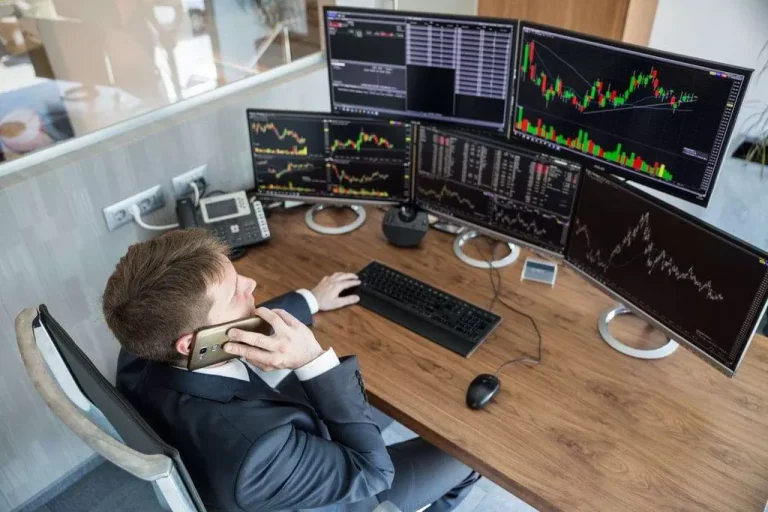Content
Some indexes may also have more Cryptocurrency wallet concentration risk, meaning that a few companies or subsectors may dominate the index and drive its performance. Investors should understand how the underlying index or benchmark of a biotech ETF is constructed and how it aligns with their investment objectives and risk tolerance. Market demand and sentiment, supply and production dynamics, central bank policies, ETF performance, and historical price trends all play a role in determining the ratio and the performance of ETFs tracking gold and silver prices.
What Is an ETF’s Tracking Error?
A lower expense ratio is generally better as it means that more of the returns are being passed on to the investor. For example, if an ETF has an expense ratio of 0.1% and another has an expense ratio of 0.5%, then the first ETF is more cost-effective. As the ETF industry continues to grow, non-covered securities will become an increasingly important issue for investors to consider. While it may seem like a minor issue, the impact of non-covered securities can be significant. By understanding the potential impact https://www.xcritical.com/ of non-covered securities, investors can make more informed decisions when it comes to selecting ETFs for their portfolios. Tracking error is a measure of how closely an ETF’s returns track its underlying index.
Can Ordinary Investors Create and Redeem ETF Shares?
This section considers the quantile cointegration model (Xiao 2009) applied to S&P 500 price data, variables related to index fundamentals, and fund flows to ETFs. Bhattacharya and O’Hara (2020) point out two distinct sources of systemic risk. One set of systemic effects stems from the original passive basket structure. The long-term effects of the erosion of active investing at the asset level brought about by passive instruments such as ETFs are beginning to unfold in markets. A second set of systemic issues relates to ETFs’ role in market disruptions %KEYWORD_VAR% as “Flash Crashes.” Over the past few years, the frequency, weakness, and severity of such disruptions have surprised regulators and market participants. The expense ratio of an ETF is the annual fee charged by the fund manager for managing the assets.
- In this study, we analyze the effect of ETFs’ FOF on the valuation of the S&P 500, as well as on equity volatility, as measured by the VIX.
- One set of systemic effects stems from the original passive basket structure.
- Investors may acquire ETFs and tender them for redemption through the Fund in Creation Unit Aggregations only, please see the prospectus for more details.
- These instruments hold a pool of securities, usually about a specific index, and trade on an exchange, similar to regular stocks.
- ETFs that track popular and heavily traded indices, such as the S&P 500, tend to have higher liquidity compared to those that track less popular or niche indices.
An overview of 5 different factors
For example, let’s consider an investor who wants exposure to the technology sector but doesn’t want to invest in individual tech stocks due to their higher risk profile. They decide to invest in a technology-focused ETF that tracks a broad-based tech index. While this provides diversification within the sector, it also means that if the tech sector as a whole experiences a downturn, the value of their ETF investment will likely decline. ETFs with strong market maker participation tend to have better liquidity, as the presence of these specialized firms helps facilitate trading and ensures that there is a ready market for investors looking to buy or sell shares. Market makers profit from the bid-ask spread and have incentives to keep the spread narrow, benefiting both investors and themselves. ETFs have become increasingly popular among investors due to their low costs and diversification benefits.


These effects are generally stronger for smaller ETF components, and the importance of each factor changes over time. These findings are relevant to market practitioners, regulators, and investors of these increasingly popular products. However, those studies obtained contradictory results (Malkiel and Radisich 2001; Morck and Yang 2001). Exchange-traded funds (ETFs) have revolutionized the world of investing, offering a diversified portfolio of assets at a lower cost compared to traditional mutual funds. But when it comes to evaluating the performance of these investment vehicles, investors need more than just a glance at their market price.
Today, new technologies and expanding data sources are allowing investors to access factors with ease. Factors offer differentiated returns and diversification benefits, with low correlations between different factors. Advanced use cases — from transition management and liquidity enhancement to low-cost beta and securities lending — show how institutions are already using ETFs to solve their unique challenges.
Large price swings can occur in such markets within very short periods and may result in your investment suffering a loss. During an economic downturn, the fund might swiftly move from cyclical to defensive sectors. Observing its performance underlines the efficacy (or challenges) of dynamic asset allocation strategies. Consider a high-dividend ETF experiencing a shift in the dividend-paying landscape. Variations in company payouts or economic conditions can influence the fund’s yield, offering a tangible example of how external factors impact ETF performance beyond basic price movements. Understanding ex-dividend dates and their impact on ETF performance is an important consideration for investors in dividend ETFs.
Additionally, the average bid-ask spread is an important metric to consider. Because they look similar on the page, ETFs and exchange-traded notes (ETNs) are often confused with each other. However, investors should remember that these are very different investment vehicles. ETNs may also have a stated strategy, track an underlying index of commodities or stocks, and require fees, among other features. If you are deciding between similar ETFs and mutual funds, be aware of the different fee structures of each, including the trading fees that may be generated inside of actively managed ETFs. And remember, actively trading ETFs, as with stocks, can reduce your investment performance with commissions quickly piling up.

However, the impact of equity ETF on the VIX is significant only when fundamental factors are at play. In all other scenarios, where the market is either undervalued or overvalued, and the dynamics are not fundamentally driven, equity ETF flows have no significant impact on volatility. These results are undoubtedly more consistent with stock market dynamics and resolve the inconsistencies observed between the results of the previous research. Market demand and sentiment play a significant role in influencing the Gold Silver ratio and ETF performance.
On the other hand, ETFs that track niche markets or have low trading volumes may be less liquid and may be subject to wider bid-ask spreads and increased trading costs. Investors should consider market conditions, sector-specific factors, fund-specific factors, tracking error, and currency risk when evaluating ETFs. By taking these factors into account, investors can make informed decisions about which etfs are right for their investment goals. Since an ETF is a basket of securities, its bid-ask spread is partly determined by the spread on those underlying assets. Global ETFs, for example, may experience wider spreads since it’s likely some of their underlying securities will be in markets that are closed for trading at any given time.
We will also provide some examples of bond ETFs that have performed well in different market conditions and scenarios. The timing of the roll, the liquidity of the underlying securities, and the trading behavior of market participants are all factors that can affect ETF performance. Investors should consider these factors when selecting ETFs and monitor them closely to ensure that their investments are performing as expected.
Unlike closed-end funds, which have a fixed number of shares, open-ended ETFs can adjust their share count based on demand and supply dynamics. Read on to understand how ETF liquidity works and what it means for traders and investors. EU leaders are working to develop a continental capital markets union that can reinvigorate the European economy by guaranteeing the free movement of people, goods, services and capital across nations.
And if you have questions around trade execution, you can always contact the American Century Investments capital markets desk through your American Century Investments® or Avantis Investors® representative. ETFs offer three levels of liquidity—on-screen liquidity, broker-assisted liquidity and specialist-accessed liquidity. Although ETFs may be bought and sold on the exchange through any brokerage account, ETFs are not individually redeemable from the Fund. Investors may acquire ETFs and tender them for redemption through the Fund in Creation Unit Aggregations only, please see the prospectus for more details. There can be no assurance that a liquid market will be maintained for ETF shares.
